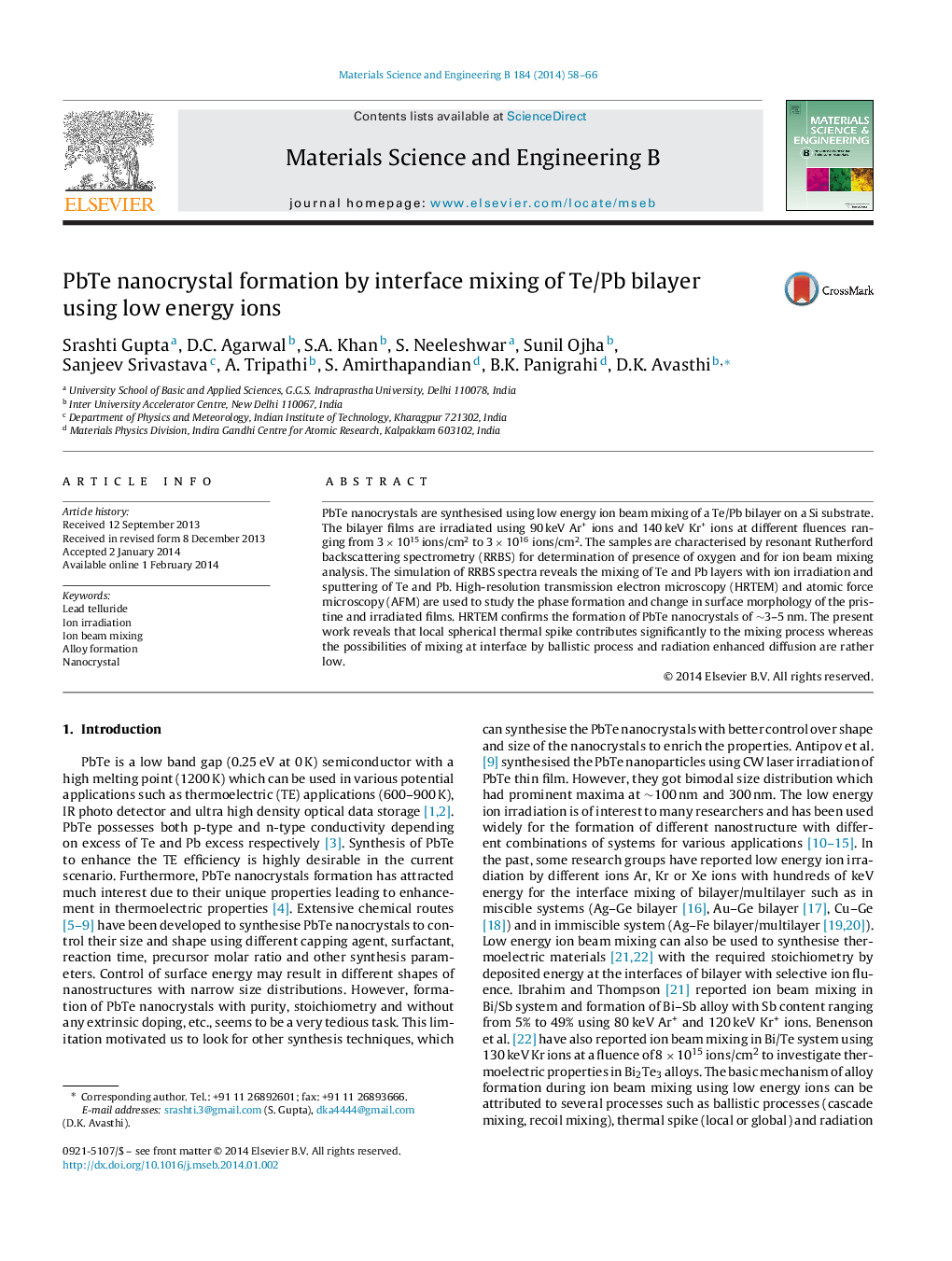| Article ID | Journal | Published Year | Pages | File Type |
|---|---|---|---|---|
| 1528825 | Materials Science and Engineering: B | 2014 | 9 Pages |
•Ion beam mixing of bilayer Te/Pb has been done using low energy ion beam.•Oxygen free PbTe thin film has been synthesised.•Ion beam mixing of bilayer Te/Pb induces the formation of PbTe nanocrystal of size ∼3–5 nm.•Local thermal spike contributes significantly to Te/Pb bilayer mixing, whereas the possibilities of ballistic and RED processes are rather low.
PbTe nanocrystals are synthesised using low energy ion beam mixing of a Te/Pb bilayer on a Si substrate. The bilayer films are irradiated using 90 keV Ar+ ions and 140 keV Kr+ ions at different fluences ranging from 3 × 1015 ions/cm2 to 3 × 1016 ions/cm2. The samples are characterised by resonant Rutherford backscattering spectrometry (RRBS) for determination of presence of oxygen and for ion beam mixing analysis. The simulation of RRBS spectra reveals the mixing of Te and Pb layers with ion irradiation and sputtering of Te and Pb. High-resolution transmission electron microscopy (HRTEM) and atomic force microscopy (AFM) are used to study the phase formation and change in surface morphology of the pristine and irradiated films. HRTEM confirms the formation of PbTe nanocrystals of ∼3–5 nm. The present work reveals that local spherical thermal spike contributes significantly to the mixing process whereas the possibilities of mixing at interface by ballistic process and radiation enhanced diffusion are rather low.
